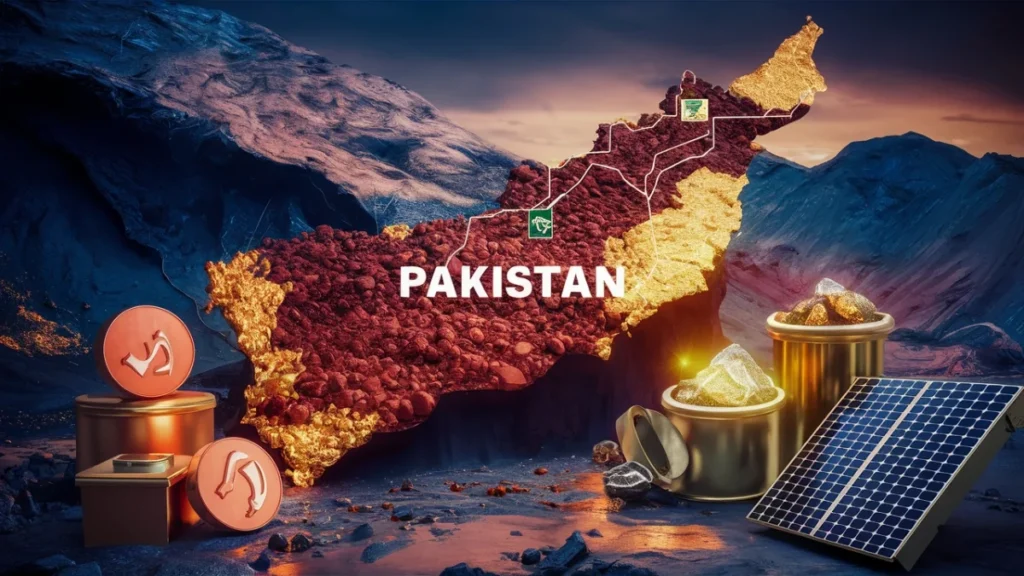Pakistan’s extraordinary mineral wealth, worth an estimated $6-8 trillion, remains largely untapped, while the country battles a sophisticated web of disinformation campaigns that undermine investor confidence and economic stability. As foreign-backed propaganda operations and domestic political misinformation converge to distort Pakistan’s true potential, the nation risks losing its place in the global race for critical minerals that will define the 21st-century economy.
The Scale of Economic Sabotage Through False Information
Disinformation has emerged as a significant threat to Pakistan’s economy, causing measurable damage across multiple sectors. During the May 2025 India-Pakistan tensions, false reports spread rapidly through mainstream media, with Indian channels broadcasting fabricated footage from Gaza and Lebanon as evidence of Pakistani destruction. The economic consequences were immediate; investor confidence plummeted, and Pakistan’s KSE-100 index fell by 2% following false security reports about Karachi.
The sophistication of these campaigns has evolved dramatically. During recent tensions, AI-generated deepfakes showed Pakistani and Indian leadership admitting defeat, while video game footage was weaponized as “evidence” of military victories. Pakistan’s own government social media accounts inadvertently shared gaming clips as real military footage, highlighting how pervasive the disinformation challenge has become.
Credit rating agencies increasingly factor disinformation-fueled uncertainty into their assessments. Moody’s downgraded Pakistan to Caa2 in 2012, citing both economic instability and the proliferation of disinformation during periods of fifth-generation warfare. Similarly, Fitch Ratings’ downgrades to B- in July 2022 and CCC+ by October 2022 explicitly referenced political volatility and disinformation as key factors.
Disinformation Economy: A Parallel Financial System
Recent research reveals that disinformation in Pakistan has evolved into “a fully operational economy”, with organized networks generating revenue through false content creation and distribution. PTI’s social media operations allegedly consumed Rs870 million in taxpayer funds, employing 1,109 individuals across Khyber Pakhtunkhwa to spread propaganda against state institutions. Analysis showed 89% of these accounts were freshly created with fake followers, representing an industrial-scale disinformation infrastructure.
The economic ripple effects extend beyond direct costs. False rumors about fuel shortages in mid-2024 caused artificial scarcity and price spikes, while fabricated reports about Pakistani rupee devaluation triggered panic buying of foreign currency. During COVID-19, misinformation about product shortages, particularly toilet paper, created genuine supply chain disruptions as panicked consumers engaged in hoarding behavior.
Pakistan’s Hidden $6 Trillion Treasure Under Attack
While disinformation campaigns seek to portray Pakistan as unstable and investment-unfriendly, the country possesses one of the world’s most significant mineral endowments. Pakistan’s geological surveys identify 92 different minerals across 600,000 square kilometers, with 52 currently under commercial extraction. The estimated value ranges from $6-8 trillion, yet the mining sector contributes merely 3.2% to GDP.
The Reko Diq project alone contains 12.3 million tons of copper and 20.9 million ounces of gold, expected to generate $4-5 billion annually once operational by 2028. International donors have pledged $5 billion for the project, exceeding the required $3 billion investment, demonstrating genuine confidence in Pakistan’s mineral potential despite negative propaganda.
Pakistan also possesses world-class gemstone reserves, ranking among the top five global producers with the fifth-largest high-quality reserves worldwide. The country could potentially export 800,000 carats of ruby, 87,000 carats of emerald, and 5 million carats of peridot annually. However, 80% of gemstone exports currently leave in raw form, significantly reducing their market value.
The Global Race Pakistan Cannot Afford to Lose
While Pakistan hosts investment summits and battles disinformation, the world’s major powers are locked in an intense competition for critical minerals. The United States recently imposed 34% tariffs on Chinese imports to reduce dependence on Beijing’s mineral supply chains, while China controls 95% of global rare earth production. China has responded by restricting exports of crucial materials like gallium, germanium, and rare earth elements essential for semiconductors and defense technology.
Pakistan’s response has been disappointingly bureaucratic. The new Khyber Pakhtunkhwa Mines and Minerals Bill 2025 creates additional regulatory layers rather than streamlining investment processes. The law mandates joint ventures with state-owned companies for projects above Rs500 million, entities that largely exist on paper without resources or technical capacity.
Building Economic Resilience Against Information Warfare
Pakistan must implement comprehensive strategies to counter disinformation while simultaneously developing its mineral wealth. Legal frameworks need strengthening to hold individuals and organizations accountable for deliberately spreading false economic information. Media literacy campaigns should help citizens identify and resist disinformation, particularly regarding economic matters that affect investment decisions.
The government should prioritize transparency in economic policies and mining development to reduce space for false narratives. International cooperation with fact-checking organizations and social media platforms can help identify and remove disinformation quickly.
Most critically, Pakistan must accelerate the development of its mineral sector to create tangible economic progress that naturally counters negative propaganda. The Special Investment Facilitation Council has identified mining as one of its top-five priority sectors, but progress remains largely symbolic. Real advancement requires cutting through bureaucratic obstacles, modernizing exploration technology, and offering genuine investor confidence through streamlined regulatory processes.
The Choice Between Prosperity and Propaganda
Pakistan stands at a crossroads where it can either succumb to disinformation campaigns that paint the country as unstable and investment-unfriendly, or proactively develop its $6 trillion mineral wealth to demonstrate real economic potential. The global minerals race is accelerating, with major powers securing strategic resources while Pakistan remains largely sidelined.
The country’s extraordinary geological assets, from world-class gemstones to critical minerals essential for modern technology, offer a foundation for economic transformation that no amount of disinformation can diminish. However, realizing this potential requires moving beyond defensive reactions to false information toward offensive strategies that showcase Pakistan’s genuine capabilities and mineral wealth to global investors and partners.
Success depends on Pakistan’s ability to simultaneously combat disinformation while building the institutional capacity, regulatory frameworks, and international partnerships necessary to unlock its mineral potential. The stakes could not be higher. Pakistan’s economic future hangs in the balance between truth and propaganda, between development and stagnation, between joining the global minerals race and remaining a spectator in the world’s most important economic competition.
Also Read: India’s Lobbying Hypocrisy: Distraction and Double Standards



